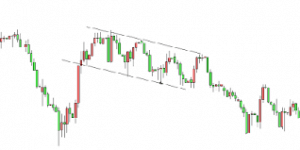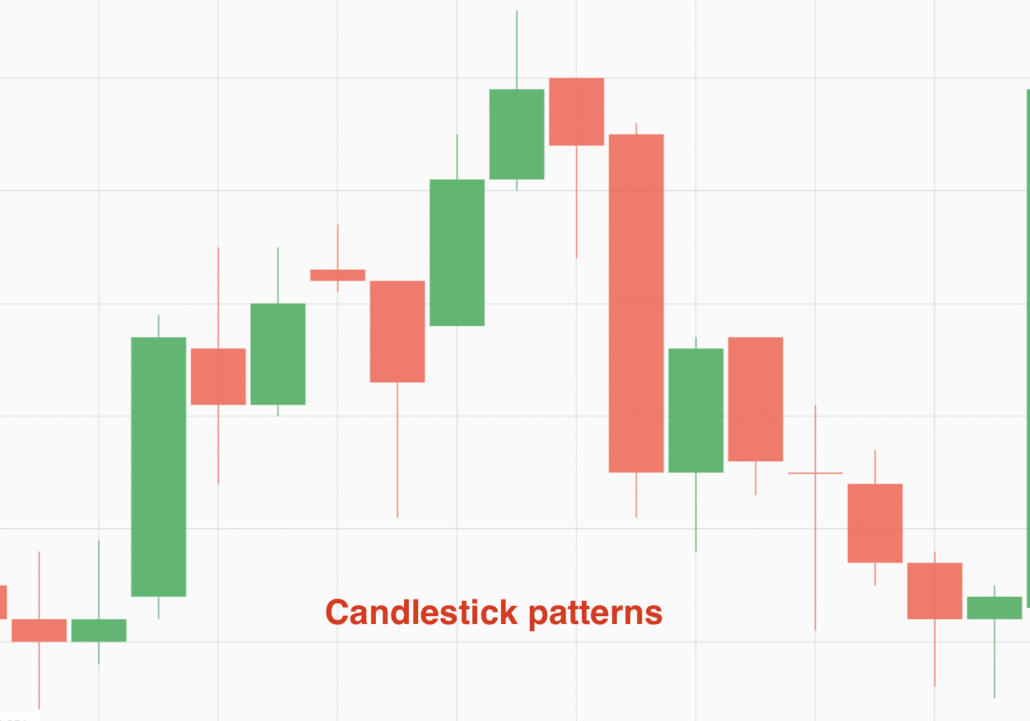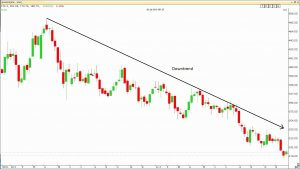
Introduction
The world of trading has seen many innovations, with binary trading standing out as a unique method that many traders have come to embrace. At the heart of this method lies the binary trading strategy. But what exactly is it? And how does binary trading differ from traditional trading methods?
Overview of Binary Options
Before we delve deep into the binary trading strategy, it’s essential to understand what binary options are. In essence, binary options are financial instruments that allow you to bet on the price movement of specific market assets. This could range from commodities, stocks, or even forex pairs.
Mechanics of Trading Binary
Every effective binary trading strategy starts with understanding its mechanics. First, you’d need to select a binary option broker. These brokers provide platforms where traders can execute their trades. Understanding the execution process is key. For instance, you choose a particular asset and predict whether its price will go up or down by a certain expiration time. The outcome often depends on factors like intrinsic value and the time left before the option expires.
Key Concepts in Trading Binary
Binary trading stands out in the world of financial markets due to its unique structure and potential for quick returns. Like any form of trading, success in binary options requires a deep understanding of its key concepts. At the center of it all lies the binary trading strategy, which is informed by these concepts. Let’s delve deeper into these foundational ideas, constantly exploring how an effective binary trading strategy is influenced by them.
1. In-the-Money vs. Out-of-the-Money Options:
An understanding of these terms is fundamental to any binary trading strategy. When you predict the movement of an asset’s price correctly and it closes in your favor, your option is termed ‘In-the-Money.’ For instance, if you predict that a stock’s price will rise, and it does by your option’s expiration, you’re In-the-Money.
On the flip side, if your prediction is incorrect, the option is ‘Out-of-the-Money.’ An effective binary trading strategy will aim to maximize the number of In-the-Money trades while minimizing the opposite.
2. Expiration Timeframes:
Central to every binary trading strategy is the concept of expiration timeframes. These timeframes dictate how long you have before your option expires. They can range from as short as 60 seconds to days, weeks, or even months. The strategy one chooses often aligns with their preferred timeframe. For example, day traders might focus on shorter expiration times, while long-term traders might look at longer durations.
3. Volatility and Market Conditions:
Market volatility plays a significant role in shaping any binary trading strategy. Volatility refers to the price fluctuations of an asset within a specific period. Highly volatile markets can offer more trading opportunities, but they also come with increased risks. Recognizing and understanding market conditions allows traders to tailor their binary trading strategy to capitalize on these movements.
4. Strike Price:
In the realm of binary trading, the strike price is the price at which a trader enters the market. It serves as a reference point to determine if the option ends up In-the-Money or Out-of-the-Money. Refining the entry point is an essential aspect of an effective binary trading strategy, as it often determines the success of a trade.
5. Payout and Returns:
The potential payout is what attracts many to binary trading. Before entering a trade, brokers often indicate the potential return on investment if the trade ends In-the-Money. Understanding these potential returns and comparing them against the associated risks is crucial for a balanced binary trading strategy.
6. Risk Management:
Central to any binary trading strategy is risk management. Unlike traditional trading methods, binary options come with a defined risk – you know precisely how much you stand to lose or gain before you make a trade. This structured approach allows traders to manage their risks effectively, ensuring they don’t expose themselves to unnecessary losses.
Strategies for Binary Trade Success
Binary trading is a unique method of investing that involves predicting whether the price of an asset will rise or fall within a specific timeframe. To excel in this arena, one needs a comprehensive binary trading strategy that not only seeks profitable opportunities but also manages risks effectively. Let’s delve deep into some of the successful strategies that can form the backbone of a powerful binary trading strategy.
1. Trend-Following Strategy: The trend is your friend, as the old trading adage goes. This binary trading strategy revolves around identifying and riding the momentum of market trends. When the momentum of an asset is strong in a particular direction, either upward or downward, traders can take positions that align with this trend. Continuous monitoring of market indicators like moving averages can aid in recognizing strong trends and capitalizing on them.
2. Pinocchio Strategy: Named after the famous wooden puppet whose nose grew when he lied, the Pinocchio binary trading strategy is about identifying ‘lies’ or false breakouts in the market. When there’s a sudden but unsupported price movement in a specific direction, this could be a false signal. Recognizing these can be a potent aspect of an effective binary trading strategy, allowing traders to bet against these false breakouts.
3. Straddle Strategy: Uncertainty is a constant in the markets. During times when a trader is unsure about the direction of an asset’s price movement, the straddle binary trading strategy can be useful. Essentially, a trader places both a put and a call option on the same asset, ensuring that they can profit if the asset’s price moves significantly in either direction.
4. Risk Reversal Strategy: Incorporating hedging into one’s binary trading strategy can be a game-changer. The risk reversal strategy involves placing both an ‘Out of the Money’ put and an ‘Out of the Money’ call on the same asset with the same expiration date. This strategy aims to offset potential losses from one option with gains from the other, minimizing risks.
5. Knock-on Effect Strategy: One of the more advanced binary trading strategy techniques, the knock-on effect, involves making predictions based on the interconnectedness of different market assets. For example, if there’s a significant announcement related to oil reserves, it might not only affect oil prices but also the stock prices of companies in the energy sector.
6. Boundary Strategy: Markets often move within certain boundaries or ranges, and recognizing these can form the basis of a strong binary trading strategy. Traders can set upper and lower value limits, and if the price stays within this boundary, they stand to profit.
Managing Risks in Binary
Binary trading, with its allure of quick returns, has taken the financial world by storm. However, as with all trading forms, it comes with its fair share of risks. Managing these risks not only safeguards your capital but also improves the odds of success. Central to this risk management is the binary trading strategy you employ. Let’s explore the steps and techniques to mitigate these risks and enhance your binary trading strategy.
1. Set Realistic Profit Targets and Stop-Loss Points
One fundamental component of a solid binary trading strategy is having clear and realistic profit targets. By deciding beforehand the profit percentage you aim for, you can exit trades once you reach your goal, protecting your gains. Similarly, stop-loss points determine the threshold of loss you’re willing to bear, effectively preventing spiraling losses. This proactive approach ensures you don’t get carried away by market volatility.
2. Employ Diversification
It’s a timeless adage: “Don’t put all your eggs in one basket.” Diversifying your trades across various assets is a cornerstone of a robust binary trading strategy. By spreading your capital over different trades, you minimize the potential for a significant loss on any single trade. Moreover, diversification can sometimes allow the profitable trades to offset those that end out-of-the-money.
3. Emotional Discipline and Detachment
Binary trading can be exhilarating. The fast-paced nature can lead to emotional trading, which often results in impulsive decisions. A refined binary trading strategy emphasizes the need for emotional discipline. By remaining detached and focusing on data and strategy, you can make decisions that are logical rather than reactionary.
4. Continuously Educate Yourself
The financial markets are not static. They ebb and flow with global events, economic changes, and a myriad of other factors. Part of a solid binary trading strategy is to always be in the know. Regularly updating your knowledge about assets you trade, understanding market indicators, and even learning from your trades (both profitable and unprofitable) can help refine your approach and make you a better trader.
5. Use Demo Accounts to Practice
Before diving into live trading, many platforms offer demo accounts to practice. This is a risk-free environment where you can sharpen your binary trading strategy without any financial implications. It gives you the chance to understand the platform, refine your techniques, and build confidence.
6. Limit the Amount Per Trade
Another essential element in this trading strategy is deciding on the amount you’re willing to invest in each trade. By limiting this amount, typically to a percentage of your total capital, you ensure that even if a trade doesn’t go as planned, it won’t be devastating to your overall financial position.
7. Stay Updated with Market News
Financial markets are influenced by various global events. Whether it’s a major corporate merger, a central bank’s decision, or geopolitical events, these can significantly impact your trades. By staying updated, you can adapt your binary trading strategy to account for these changes and make informed decisions.
Binary Trading vs. Forex Trading: A Brief Comparison
In the dynamic world of trading, individuals often find themselves choosing between different types of trading options. Two such popular options are Binary Trading and Forex Trading. While both fall under the umbrella of speculative trading, they differ significantly in approach, potential returns, and risk management. This article aims to provide a brief comparison between the two, shedding light on how each can be approached.
1. Definition and Basic Structure
Binary : At its core, binary trading is a straightforward prediction-based trading method. Traders make predictions on whether a particular asset’s price will be above or below a certain amount after a set timeframe. Depending on whether the prediction is correct or not, the trader either gains a fixed amount or loses the initial investment. The simplicity and predictability of outcomes is why many traders incorporate a binary trading strategy into their portfolio.
Forex Trading: Forex, short for foreign exchange, involves the buying and selling of currencies. It operates based on the belief that the value of one currency will rise or fall in comparison to another. The Forex market is considerably more complex, with factors such as geopolitical events, interest rates, and economic data playing a significant role in price movements.
2. Risk and Reward
Binary : What stands out in a binary trading strategy is the known risk and reward. Before making a trade, a trader knows precisely how much they stand to gain or lose. This predetermined aspect makes it easier for traders to manage their risk.
Forex Trading: In contrast, Forex trading offers potential for both unlimited profits and losses. The market can move significantly in a short time, leading to substantial gains or losses. Hence, Forex traders often employ stop-loss orders to manage their potential losses, a technique not necessary in a traditional binary trading strategy.
3. Trade Duration
Binary : Binary options have a fixed expiration time, ranging from minutes to weeks. The duration is predetermined, allowing traders who follow a binary trading strategy to know exactly when the outcome will be revealed.
Forex Trading: Forex trades, on the other hand, can remain open indefinitely until the trader decides to close the position or when a stop-loss order is triggered.
4. Entry Points
Binary : For those utilizing a binary trading strategy, entry points might be less critical since the payout remains fixed regardless of the magnitude of price movement.
Forex Trading: Conversely, in Forex trading, entry and exit points can greatly impact profitability. A slight change in the entry point can result in a significant difference in outcomes, especially in volatile markets.
5. Complexity and Learning Curve
Binary: A binary trading strategy is generally seen as more straightforward and easier for beginners to grasp. Given the fixed outcomes, traders need only to predict the direction of price movement.
Forex Trading: With Forex trading, there’s a steeper learning curve. Traders must not only predict the direction but also understand the factors influencing currency pairs, from economic indicators to geopolitical events.
Pitfalls and Common Mistakes
Binary trading, with its promise of high returns, has attracted a massive number of participants. However, it’s not all rosy; there are potential pitfalls and mistakes that traders often fall into. A robust binary trading strategy can help in navigating this volatile journey, but awareness is equally crucial. Let’s delve into the common mistakes in binary trading and understand how an effective binary trading strategy can mitigate these risks.
1. Overleveraging: The allure of magnified profits often tempts traders into overleveraging their positions. Essentially, overleveraging means using more money than you can afford to lose. An effective binary trading strategy always emphasizes the significance of trading within one’s means. Overleveraging can wipe out a trader’s capital, leading to significant losses.
2. Neglecting Market News: Binary options prices are heavily influenced by news events. Whether it’s a major acquisition announcement or a geopolitical event, the markets respond, and prices shift. Ignoring market news means trading blindly. An integral part of any binary trading strategy is staying updated with the latest market happenings and adjusting trades accordingly.
3. Emotional Trading: Trading based on emotions rather than a well-laid-out binary trading strategy is a surefire way to incur losses. Whether it’s the euphoria of a win or the desperation of a loss, emotions can cloud judgment. It’s crucial to stick to the binary trading strategy and avoid making impulsive decisions.
4. Lack of Diversification: Just like in traditional trading, putting all your money on a single asset is risky. Diversifying trades across different assets can spread the risk. A nuanced binary trading strategy will incorporate diversification as a risk management tool.
5. Ignoring Expiry Times: The unique aspect of binary trading is the expiry time. Traders need to predict price movements within a set timeframe. Ignoring or misjudging these expiry times can turn potential profits into losses. An effective binary trading strategy always aligns with the chosen expiry time to increase the chances of a favorable outcome.
6. Failing to Test Strategies: Many traders dive into live trading without testing their binary trading strategy on demo accounts. This is akin to entering the battlefield without any training. Testing strategies helps in understanding their effectiveness and areas of improvement.
7. Chasing Losses: A losing streak can be discouraging. However, chasing losses, or trying to recover lost money by taking bigger risks, can be detrimental. This is where the discipline of a binary trading strategy comes into play. Accepting losses as part of the trading process and moving on is vital.
8. Trusting Dubious Brokers: Binary trading’s popularity has led to the rise of many brokers. Not all of them are trustworthy. Partnering with a dubious broker can lead to unexpected losses. This trading strategy isn’t just about predicting price movements; it’s also about partnering with reputable brokers to ensure your investments are secure.
Conclusion
Binary trading is an exciting world filled with opportunities. However, success requires more than just luck. An effective binary trading strategy, combined with discipline, analysis, and continuous learning, can pave the way for consistent profitability. Whether you’re a novice or a seasoned trader, refining your binary trading strategy is an ongoing journey worth every step.


